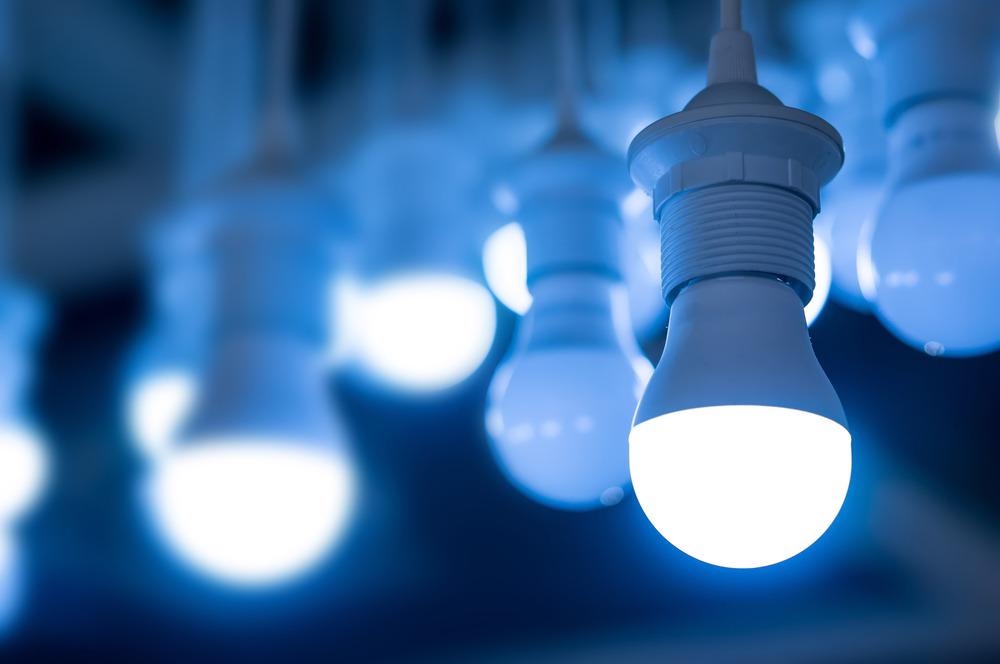 By Surbhi JainReviewed by Susha Cheriyedath, M.Sc.Mar 22 2022
By Surbhi JainReviewed by Susha Cheriyedath, M.Sc.Mar 22 2022In an article recently published in the journal ACS Energy Letters, researchers discussed the pathways to overcome degradation and to achieve stability in blue perovskite light-emitting diodes (LEDs).

Study: Overcoming Degradation Pathways to Achieve Stable Blue Perovskite Light-Emitting Diodes. Image Credit: DKai/Shutterstock.com
Background
Because of their low cost, excellent brightness, and easily programmable emission spectra that could cover the entire visible light range through halide composition tweaking, colloidal perovskite nanocrystals (NCs) are leading prospects for the next generation of full-color-gamut displays.
However, the intrinsic instability of mixed halide perovskite NC emitters due to halide migration under stress, such as bias voltage and illumination, cause local band-gap heterogeneity, which severely hampers development in electroluminescence (EL) based on these emitters. Blue emission, which can be easily obtained with the correct halide mixture, is crucial and is now the trendiest topic in perovskite LEDs.
Most reported blue LEDs that are based on perovskite NCs use mixed halide compositions of Cl and Br; however, they degrade rapidly within minutes. Despite extensive research into the degradation pathways of blue perovskite LEDs, little is known about how deterioration happens during device operation. Spectral instability and short lifespan are prevalent problems with mixed halide (Br/Cl) perovskite NCs, which represent an advanced blue emitter; in particular, a lack of knowledge of the failure processes of these devices has hampered future research.
About the Study
In this study, the authors presented the degradation pathways of CsPbBrxCl3-x NCs incorporating blue LEDs. The effect of electrochemical oxidation of Cl on the degradation and operation of the device was demonstrated. The device's build and operational parameters were altered to attain a longer lifespan by revealing these mechanisms.
The researchers showed how to prevent electrochemical oxidation to extend the device's lifespan significantly. The cubic phase CsPbBrxCl3-x NCs were synthesized with a mono-dispersion and average diameters of 9 nm. NCs' structure and emission properties were illustrated, and the Pb:Br:Cl compositional ratio was determined, with ligands balancing the remaining charge. The LEDs were made using an indium tin oxide (ITO) substrate and a PEDOT:PSS layer of 30 nm thickness over which poly(9,9-dioctylfluorene-alt-N-(4-s-butylphenyl)diphenylamine) was deposited followed by Nafion perfluorinated resin (TFB/PFI) of 20 nm thickness, NC emission film, and 1,3,5-triazine of 100 nm thickness.
The team illustrated the impact of irreversible chlorine ions and CL drift on the deterioration mechanisms of chloride/bromide (Cl/Br) mixed blue perovskite LEDs. The role of CsPbBrxCl3-x NCs as Cl ion conductors in the receiving and delivering of Cl ions from/to nearby NCs under the influence of the electric field was also illustrated.
Observations
Cl- drift between adjacent NCs in the presence of an electric field induced a Cl-deficient material region in many NC layers, which dominated the unstable EL and caused rapid device breakdown. Monolayer NC devices with restricted anion drift paths, on the other hand, had superior operational stability, and excess hole injection was shown to cause permanent chlorine loss in NCs.
With a drive voltage lower than 5 V, the PbCl2-modified monolayer NC device exhibited red-shifted EL spectra, which was comparable to multilayer NC-containing LEDs. As soon as the LED was turned back on following reverse bias, the monolayer NC emitter's PL peak progressively moved from 470 to 467 nm, as evidenced by its EL spectra. The device degradation was primarily governed by the photoluminescence quantum yield (PLQY) of the NC emitter, as shown by the normalized photoluminescence (PL) intensity and EQE. For the device with a restricted hole current, the T50 value increased exponentially to 0.55 h.
Due to constrained Cl- drift pathways, a device including a monolayer NC emitter exhibited substantially more stable EL spectra and higher operational stability than thick emission films containing many layers of NCs. A main underlying deterioration source of CsPbBrxCl3-x NC LEDs was removed by using the proposed technique for limiting halide segregation. During hole injection, the monolayer NC emitters suffered from mild chlorine loss, which was mostly related to the electrochemical oxidation, which formed Cl vacancies.
Conclusions
In conclusion, this study elucidated the deterioration mechanisms of blue LEDs using CsPbBrxCl3-x NC emitters. Cl- drift in stacked multilayer NC emitter films caused Cl- deficient patches with a reduced band-gap, which facilitated fluctuating EL spectra and rapid device breakdown in tens of seconds at low bias voltage. By using monolayer NC emitters in LEDs, this impact was reduced.
The deterioration mechanisms of chloride/bromide (Cl/Br) mixed blue perovskite LEDs were caused by Cl- drift and irreversible chlorine loss. As a result, Cl-deficient areas formed in multilayer NC films lead to red-shifted EL and rapid device breakdown.
The authors emphasized that the proposed approach holds the potential to modulate the operational temperature and hole current, which can extend the device's lifetime significantly. They also believe that this research is a significant step forward in the understanding of LEDs made with mixed halide blue perovskite NCs.
Disclaimer: The views expressed here are those of the author expressed in their private capacity and do not necessarily represent the views of AZoM.com Limited T/A AZoNetwork the owner and operator of this website. This disclaimer forms part of the Terms and conditions of use of this website.
Source:
Yuan, S., Zheng, X., Shen, W. S., et al. Overcoming Degradation Pathways to Achieve Stable Blue Perovskite Light-Emitting Diodes. ACS Energy Letters 7 1348-1354 (2022). https://pubs.acs.org/doi/10.1021/acsenergylett.2c00465